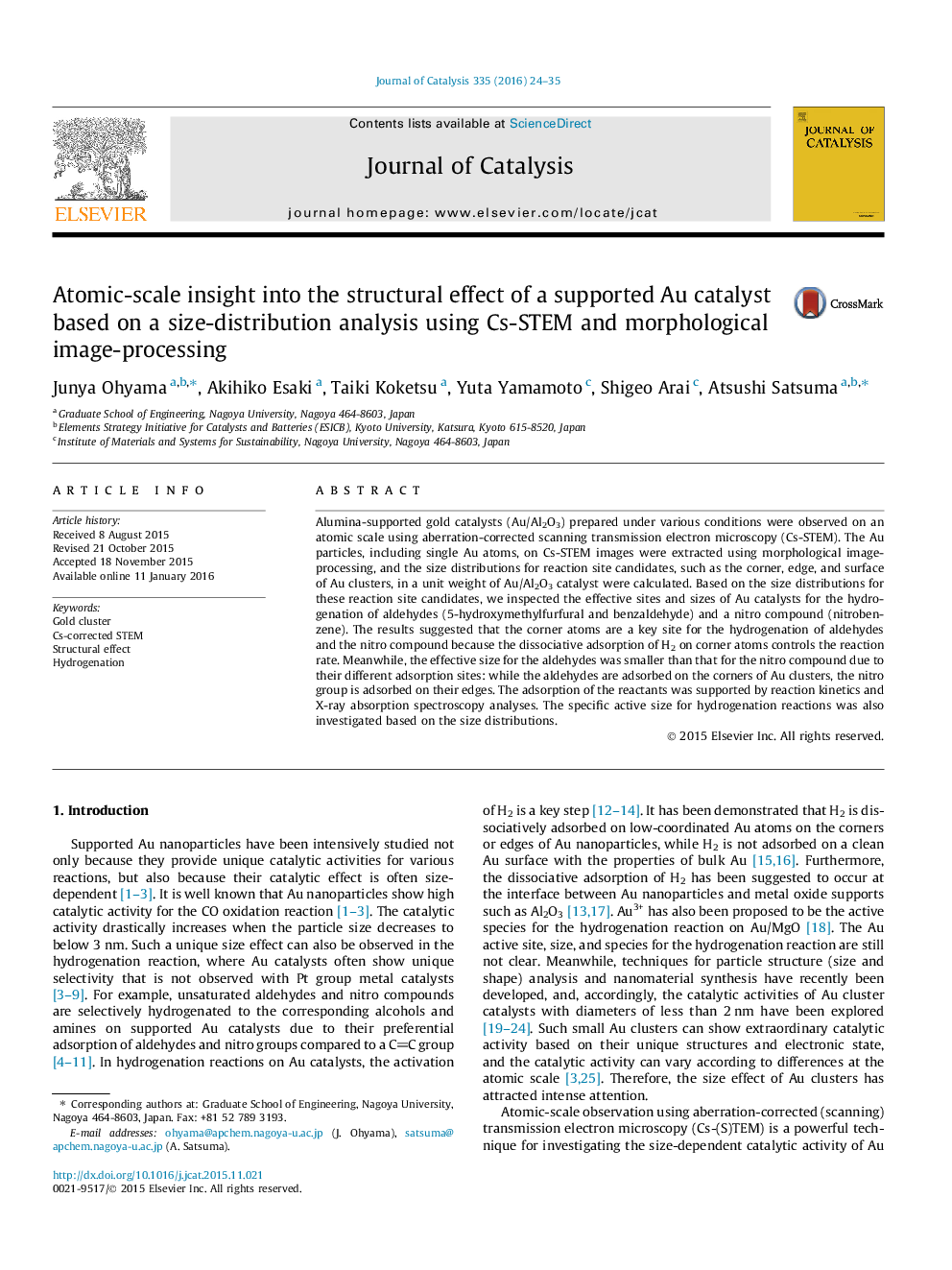| Article ID | Journal | Published Year | Pages | File Type |
|---|---|---|---|---|
| 60591 | Journal of Catalysis | 2016 | 12 Pages |
•Size and site effect of Au/Al2O3 on hydrogenation were investigated on atomic scale.•Effective size for hydrogenation of aldehyde is smaller than that for nitro compound.•Dissociative adsorption of H2 on corner atoms controls hydrogenation rate.•Aldehyde is strongly adsorbed on corners and nitro compound weakly on edges.
Alumina-supported gold catalysts (Au/Al2O3) prepared under various conditions were observed on an atomic scale using aberration-corrected scanning transmission electron microscopy (Cs-STEM). The Au particles, including single Au atoms, on Cs-STEM images were extracted using morphological image-processing, and the size distributions for reaction site candidates, such as the corner, edge, and surface of Au clusters, in a unit weight of Au/Al2O3 catalyst were calculated. Based on the size distributions for these reaction site candidates, we inspected the effective sites and sizes of Au catalysts for the hydrogenation of aldehydes (5-hydroxymethylfurfural and benzaldehyde) and a nitro compound (nitrobenzene). The results suggested that the corner atoms are a key site for the hydrogenation of aldehydes and the nitro compound because the dissociative adsorption of H2 on corner atoms controls the reaction rate. Meanwhile, the effective size for the aldehydes was smaller than that for the nitro compound due to their different adsorption sites: while the aldehydes are adsorbed on the corners of Au clusters, the nitro group is adsorbed on their edges. The adsorption of the reactants was supported by reaction kinetics and X-ray absorption spectroscopy analyses. The specific active size for hydrogenation reactions was also investigated based on the size distributions.
Graphical abstractFigure optionsDownload full-size imageDownload high-quality image (88 K)Download as PowerPoint slide
